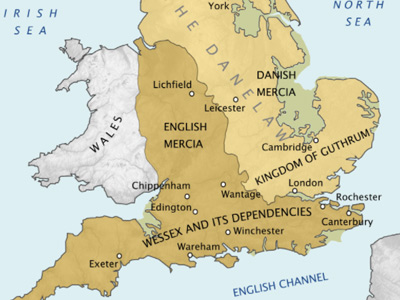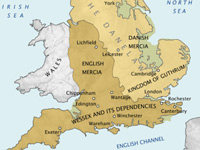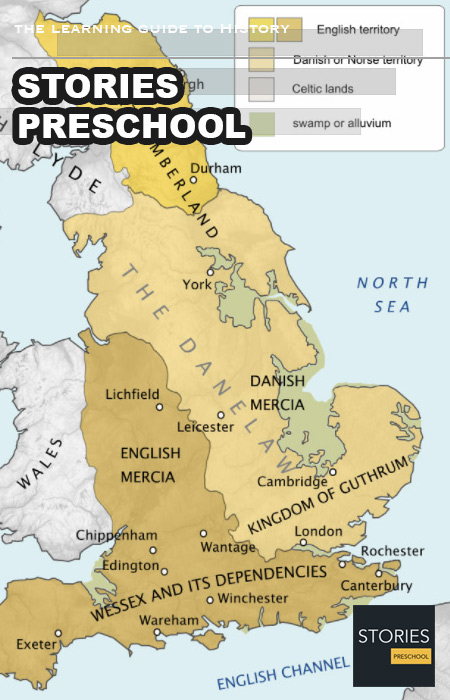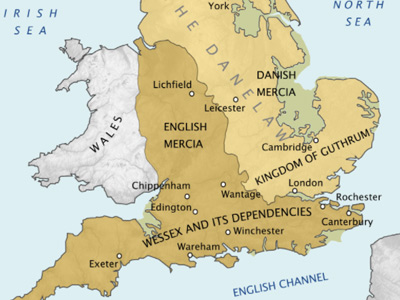Battle of Edington (878 AD)

At the Battle of Edington an army of the Anglo-Saxon kingdom of Wessex under Alfred the Great defeated the Great Heathen Army led by Guthrum on a date between 6 and 12 May AD 878, soon resulting in the Treaty of Wedmore later the same year. The primary sources locate the battle at "Ethandun" or "Ethandune", and until a scholarly consensus identified its location with the present-day Edington in Wiltshire it was known as the Battle of Ethandun, a name which continues to be used.
Events before the battle
The first Viking raid on Anglo-Saxon England is thought to have been between AD 786 and 802 at Portland in the Kingdom of Wessex, when three Norse ships arrived and killed King Beorhtric's reeve. At the other end of the country, in the Kingdom of Northumbria, during AD 793 the Holy Island of Lindisfarne was raided. After the sacking of Lindisfarne the raids around the coasts were somewhat sporadic until the 830s, when the attacks became more sustained. In 835, "heathen men" ravaged Sheppey. In 836, Ecgberht of Wessex met in battle a force of thirty-five ships at Carhampton, and in 838 he faced a combined force of Vikings and Cornishmen at Hingston Down in Cornwall.
The raiding continued and with each year became more and more intense. In 865/866 it escalated further on the arrival of what the Saxons called the Great Heathen Army. The annals do not report the size of the army, but modern estimates suggest between five hundred and a thousand men. It was said to have been under the leadership of the brothers Ivar the Boneless, Ubba, and Halfdan Ragnarsson. What made this army different from those before it was its intent. Its arrival began "a new stage, that of conquest and residence". By 870, the northmen had conquered the kingdoms of Deira and East Anglia, and in 871 they attacked Wessex. Of the nine battles mentioned by the Anglo-Saxon Chronicle during that year, only one was a West Saxon victory; but in this year Alfred succeeded his brother Ethelred, who died after the Battle of Merton.
Mercia had collapsed by 874, and the Army's cohesion went with it. Halfdan went back to Deira and fought the Picts and the Strathclyde Welsh to secure his northern kingdom. His army settled there and he is not mentioned after 876, when "[the Danes] were engaged in ploughing and making a living for themselves". Guthrum, with two other unnamed kings, "departed for Cambridge in East Anglia". He made several attacks on Wessex, starting in 875, and in the last nearly captured Alfred in his winter fortress at Chippenham. By 878, the Danes held the east and north east of England, and their defeat at the Battle of Ashdown had paused but not halted their advance. Alfred the Great had spent the winter preceding the Battle of Edington in the Somerset marsh of Athelney, the nature of the country giving him some protection. In the spring of 878, he summoned his West Saxon forces and marched to Edington, where he met the Danes, led by Guthrum, in battle.
HISTORY

RESOURCES
This article uses material from the Wikipedia article "Battle of Edington (878 AD)", which is released under the Creative Commons Attribution-Share-Alike License 3.0.
© Stories Preschool. All Rights Reserved.










